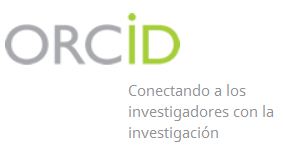Reliability of an instrument about the cognitive skills for minimal intervention in caries treatment during the dental major
Keywords:
learning, dental caries, curriculum, medical education, evaluation instruments.Abstract
Introduction: In Cuba, the dental major curriculum has been, for more than forty years, addressing the same principles concerning dental caries.
Objective: To determine the reliability of an instrument for evaluating the necessary cognitive-practical skills for the minimal intervention treatment of caries within the dental major curriculum.
Methods: A pilot and descriptive–cross-sectional study was carried out for describing, to what extent, the previously designed instrument was comprehensible and functional. The sample consisted of 52 professors from the major. The information was collected in two stages: a test for applying the instrument and a second test carried out after fifteen days. The variables consisted of 21 items resulting from some previous validation. The mean variability for each item at the time of both tests, the internal consistency through Cronbach's alpha, a mean comparison of the instrument items according to Student's t test, and the intraclass correlation coefficient were calculated.
Results: The test and the second test showed total mean values of 2.43 and 2.47, respectively, expressing that the objectives of the instrument were partially achieved. The scores showed good consistency (test: ɑ = 0.817; second test: ɑ = 0.801). In the hypothesis test, being t ≤ 0.05 at both times, it was accepted that all items were related.
Conclusions: The hypothesis was accepted and the form items were related to the referred skills; therefore, it can be applied for the proposed purpose.
Downloads
Downloads
Published
How to Cite
Issue
Section
License
Los autores conservan todos los derechos sobre sus obras, las cuales pueden reproducir y distribuir siempre y cuando citen la fuente primaria de publicación.
La revista se encuentra sujeta bajo la Licencia Creative Commons Atribución-No Comercial 4.0 Internacional (CC BY-NC 4.0) y sigue el modelo de publicación de SciELO Publishing Schema (SciELO PS) para la publicación en formato XML.
Usted es libre de:
- Compartir — copiar y redistribuir el material en cualquier medio o formato
- Adaptar — remezclar, transformar y construir a partir del material.
La licencia no puede revocar estas libertades en tanto usted siga los términos de la licencia
Bajo los siguientes términos:
- Atribución — Usted debe dar crédito de manera adecuada, brindar un enlace a la licencia, e indicar si se han realizado cambios. Puede hacerlo en cualquier forma razonable, pero no de forma tal que sugiera que usted o su uso tienen el apoyo de la licenciante.
- No Comercial — Usted no puede hacer uso del material con propósitos comerciales.
- No hay restricciones adicionales — No puede aplicar términos legales ni medidas tecnológicas que restrinjan legalmente a otras a hacer cualquier uso permitido por la licencia.
Avisos:
- No tiene que cumplir con la licencia para elementos del material en el dominio público o cuando su uso esté permitido por una excepción o limitación aplicable.
- No se dan garantías. La licencia podría no darle todos los permisos que necesita para el uso que tenga previsto. Por ejemplo, otros derechos como publicidad, privacidad, o derechos morales pueden limitar la forma en que utilice el material.


